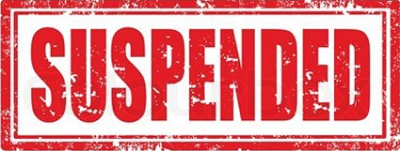CDL Driver Disqualifications: Observations
First and foremost, the USDOT interpretations state that a motor carrier cannot unilaterally place a driver out-of-service for serious traffic convictions. In its guidance on the driver disqualification requirements, the USDOT specifies that a motor carrier must pull a driver off the road once it “knows, or should have known” of a driver’s conviction for any of the disqualifying offenses set out. It would seem difficult to reconcile that interpretation with the guidance found in the requirements, which specifically states that the motor carrier’s only obligation is “to refrain from using the driver begins when it learns of the disqualification action,” by the State or FHWA. However, the devil is in the details; the “disqualifying offenses” under the requirements are not the same as the “serious traffic violations”. They are arguably incomparable in terms of the nature and degree of the conduct at issue, i.e., the disqualifying offense of DUI while driving a CMV vs. the serious traffic violation of following too closely (which could have occurred while driving either a CMV or personal vehicle). There is thus at least an implied recognition by the USDOT that a driver can be convicted of two of the serious traffic convictions listed, yet nevertheless capable of saving his CDL (and, at times, his job). In those situations, the motor carrier can wait for the State or FHWA to take action before it is required to do anything. However, a conviction for one of the disqualifying offenses carries with it the penalty of automatic disqualification. Thus, because no official action is needed to effectuate a disqualification, the motor carrier cannot wait and instead must pull the driver off the road as soon as it knew or should have known of the conviction for the disqualifying offense. It is also worth nothing that both regulations refer to the “authority” to disqualify a driver from CMV operation as resting solely with the State or the FHWA, but never with the motor carrier. In other words, the motor carrier’s only province is whether the driver may drive the motor carrier’s own CMVs, while the State or FHWA controls whether the driver is disqualified from operating a CMV for anyone under any circumstances. The regulations also draw a line between what the motor carrier must do versus what it can choose to do. For example, the regulations prescribes the motor carrier’s “minimum responsibility” without affecting its “latitude” to fire, suspend, or transfer its driver. Of course, regardless of whether the motor carrier must act or not, it permits an unsafe driver (as shown by his convictions for any offense) at its own peril, and its choice is properly scrutinized when civil litigation results from the negligence of that driver.
Second, the disqualifying provisions should be read in conjunction with the annual review requirements. In determining whether the driver has “exhibited a disregard for the safety of the public” under the latter regulation, the motor carrier conducting the review “must give great weight to violations, such as speeding, reckless driving, and [DUI].” This list is obviously open ended. Certainly the violations are ones that the motor carrier should consider as part of its “great weight” analysis. The ultimate goal of that analysis is to “determine whether the driver meets minimum requirements for safe driving,” a decision the motor carrier must make regardless of whether the driver has been formally disqualified by the State or FHWA.
 Georgia Injury Lawyers Blog
Georgia Injury Lawyers Blog









